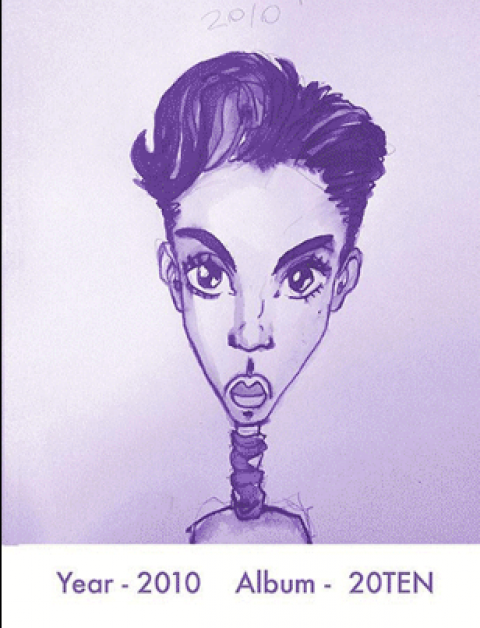To many people, blackness looks like one thing. For Prince Rogers Nelson, who died Thursday at 57, blackness could take any form.
Prince rocked eyeliner. He wore sequins and rings and skin-tight spandex in the wildest colors imaginable. He strutted like a peacock on the stage and in music videos. He oozed sexuality from posters on the bedroom walls of teenagers across the country.
He was also openly kooky and didn’t care that you made fun of him. When he dropped his name for a symbol in 1993 and went by The Artist Formerly Known as Prince, he became fodder for jokes in late night monologues.
But, as he said in 2004 after he went back to Prince, "When I became a symbol, all the writers were cracking funnies, but I was the one laughing. I knew I'd be here today, feeling each new album is my first."
The 5-foot-2 Prince reportedly could play basketball like no other, and despite his hit song, "1999," counting down to the end of the world, didn’t "believe in time."
He spoke in riddles, at times, and found comfort in eating spaghetti and orange juice. He was quiet, but not necessarily shy.
He said things like this, which both made no sense and perfect sense at the same time:
"There are no accidents. And if there are, it's up to us to look at them as something else. And that bravery is what creates new flowers."
In his unavoidably dance-inducing hit, "I Would Die 4 U," he sang, "I'm not a woman. I'm not a man. I am something that you'll never understand."
Just as the late David Bowie influenced gender-questioning and queer kids during the height of his career, so did Prince, especially for brown kids who relished being different.
He was an example — perhaps even the goal — of sensual, confident androgyny, andblackness.
From the beginning of his career, Prince was unapologetic about his black heritage, which, for a light-skinned, diminutive rocker, he could have easily been coyer about. Instead he embraced both his blackness and his androgynous bravado, characteristics that don’t necessarily go hand in hand on first thought.
Perhaps it was because he had to. As a 1981 New York Times article chronicles, white Rolling Stones fans pelted him with fruit and bottles when he toured with them.
Rock radio stations didn’t play him, ghettoizing him to black stations — perhaps they expected Jimi Hendrix to be the only black man capable of rocking a guitar like no other.
It didn't matter though. Prince was Prince. He kept on being his eccentric, sexy, unapologetic self, and kept on making the art he wanted to make.
In his later years, Prince showed no signs of slowing down or dialing back who he was. At the end of his life, he cultivated other young black artists who didn’t fit the characteristics of a typical R&B star, including tuxedo-rocking Janelle Monáe and singer-songwriter Eryn Allen Kane.
Following the death of Freddie Gray, who died in police custody, Prince performed a song about unrest in Baltimore with Kane.At last year’s Grammy awards, through his iconic smirk, Prince declared "albums still matter. Like books and black lives, albums still matter."
This was Prince’s style. He was unapologetic about himself, whether it was beyond the norms of what it means to be black in America, or what it means to be a rock star.
"The most important thing is to be true to yourself, but I also like danger," he once said. "That's what's missing from pop music today. There's no excitement or mystery"
So he filled the void he saw.
In doing so, his mysteriousness and confidence were an inspiration to many. As one of my friends recounted upon hearing that Prince had passed away Thursday, she once turned to her mother and asked why Prince dressed the way he did. Her mother replied, the artist wasn’t "afraid to be himself and he's sure enough in himself to do that." And with that, she was enamored.
Prince was an icon for that young black kid, and countless others who needed a weirdo to look up to.


Spread the word